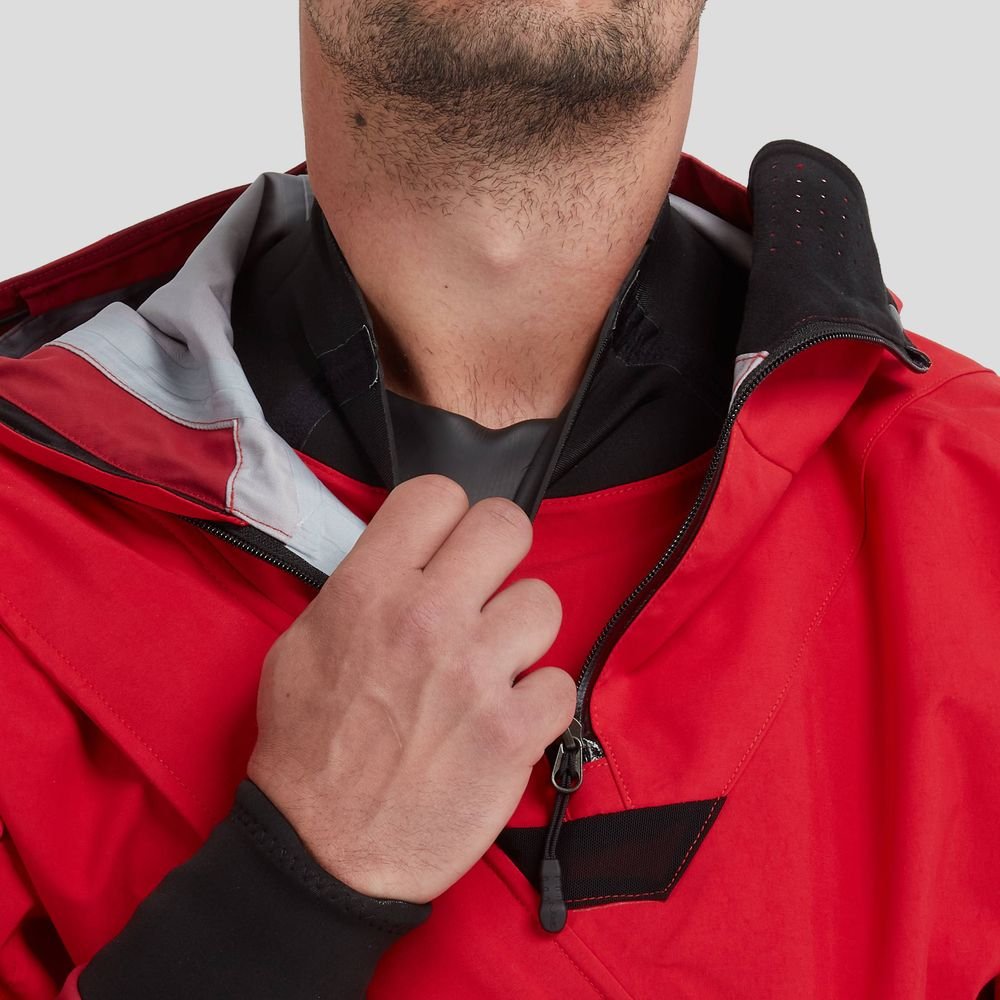Are Semi-Drysuits Safe?
Why Semi-Drysuits Are a Safe Choice for Ocean Kayakers
By Alex LaLonde, Owner of Body Boat Blade International
As a professional kayaker and instructor who has paddled in some of the most challenging and diverse waters around the world—from the rugged coastlines of the Pacific Northwest to the rivers of Nepal—I’ve had the opportunity to test nearly every piece of gear available to sea kayakers. One topic that comes up often in my courses at Body Boat Blade International is whether a semi-drysuit offers enough safety and performance for ocean paddling compared to a full drysuit.
Let me be clear: both full drysuits and semi-drysuits can be life-saving pieces of equipment in cold water environments. The key is understanding how each works, and how to choose the right suit for your needs based on conditions, experience, and risk profile.
What Is a Semi-Drysuit?
A semi-drysuit is not too dissimilar to a full drysuit. Most come equipped with latex gaskets, though some have neoprene wrist gaskets. The big difference with a semi-dry suit is that it uses a neoprene neck seal instead of the latex neck gasket found in full drysuits. The idea is to balance comfort and protection—especially around the neck, where latex gaskets can be restrictive and irritating for many paddlers during long days on the water. They are also a great alternative for anyone that is allergic to latex.
Modern Semi-Dry suit’s use snug fitting neoprene cuffs in place of a traditional latex gasket.
Ocean Safety and the Semi-Drysuit
The ocean is dynamic and can be unforgiving. A common misconception is that a semi-drysuit is only for “milder” conditions. That’s simply not true. I’ve used semi-drysuits on multi-day expeditions, in tide races, and during surf landings where full immersion was part of the game. A well-designed semi-drysuit, such as the NRS Navigator that I use, with a snug neoprene neck gasket will keep the vast majority of water out—even in rolling and rescue scenarios. For most paddlers, that means staying dry enough to maintain core warmth and prevent hypothermia in the event of a capsize.
Let’s not forget: safety in the ocean is not just about your gear—it’s about how you use it. Layering properly underneath, staying active, planning intelligently, and knowing when to call it are all just as critical.
The snug neoprene gasket keeps the vast majority of water out, without the discomfort of a traditional latex gasket.
Comparing Full and Semi-Drysuits
From a safety standpoint, the main concern is cold shock and hypothermia. A semi-drysuit, when properly fitted and paired with thermal base layers, mitigates both risks extremely well. I’ve taught rescue scenarios in our home waters of the Salish Sea, with an average water temp of 52 degrees fahrenheit, where students wearing semi-drysuits stayed warm and comfortable for hours. The minor amount of water that may enter through the neck is negligible and does not significantly impact thermal protection if proper layering is used.
A Note for Novice Kayakers
For newer paddlers, choosing a semi-drysuit can actually increase safety in practice, because you're more likely to wear something that feels comfortable and non-restrictive. I’ve seen many beginners opt for full drysuits only to cut the gaskets down leaving them as loose as a neoprene gasket, or leave them at home because of discomfort around the neck. A semi-drysuit removes that barrier. When paired with proper thermal layers, a semi-dry offers protection in the event of a capsize and allows newer paddlers to focus on skills and confidence building without distraction.
In our instructional programs, we occasionally outfit novices in semi-drysuits for rescue practice, rolling, and surf zone skills. The feedback is overwhelmingly positive, and more importantly, students stay warm and dry enough to fully engage in learning.
When a Semi-Drysuit Might Not Cut It
There are scenarios where I recommend paddlers opt for a full drysuit instead of a semi-dry:
Glacial or Arctic environments: When the water is just above freezing, even a few tablespoons of cold water down the neck can accelerate heat loss and increase risk.
Extended immersion or remote expeditions: If you're planning to be far from rescue or spend prolonged time in the water (e.g., repeated rescues, surf landings in cold climates), a full drysuit gives you that extra margin of safety.
Open-water crossings in winter: In shoulder seasons or winter, if something goes wrong and you're in the water longer than expected, the full seal of a drysuit provides maximum thermal protection.
Paddlers with very low cold tolerance: Some people run colder than others. If you know that even brief cold water exposure affects your judgment or performance, go with the full dry.
In short: if you're entering a high-risk scenario where the worst-case includes extended cold-water exposure, a full drysuit is the smart choice, but not the only choice. Again, these choices will depend on your level of skill, preparation, layering choices, and risk tolerance.
Conclusion
Would I recommend a semi-drysuit for ocean kayaking? Absolutely. I’ve worn mine in expedition conditions in the icy waters of Iceland to the warm waters of Mexico and have never once questioned its reliability. For many paddlers—especially those who find latex neck gaskets uncomfortable or restrictive—a semi-drysuit offers a safer overall experience because you’re more likely to wear it consistently and correctly.
Safety is about preparation, skill, and using gear that works with you. For thousands of ocean miles, my semi-drysuit has done exactly that.
—
Alex LaLonde
Owner, Body Boat Blade International
Professional Sea Kayaker & Coach



